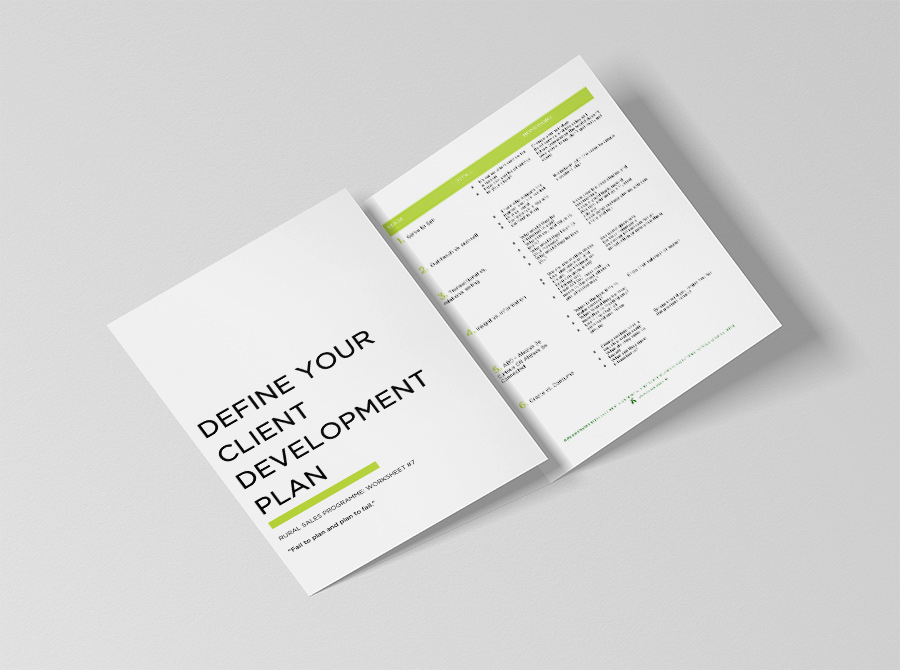Is The Fieldays Formula Too Simplistic For Today’s Rural Marketer?
This week marked the 50th anniversary of Fieldays at Mystery Creek and the biggest show in town. Whilst it has many advocates, including its own passionate PR dept, equally there seem to be as many who don’t like it, think it’s got too big and prefer regional field days.
The problem is unless you’re a big fish it is very hard to get cut through at National Fieldays. Rural merchants, banks, vehicle manufacturers and fertiliser co-operatives dominate proceedings. As a farmer-shareholder you are going to make sure you get your proverbial piece of the “pie” every year with your main suppliers leaving little time to get round to see other exhibitors who are working hard on the fringes to get your attention.
Is the fear of missing out real or misplaced?
Fieldays’ marketing machine is a very good one and should be commended. However the inferred implication that if you’re not at Fieldays you might miss out because your competitors are there plays heavy on the pyschological fear of missing out or worse missing your site spot if you’re on a waiting list.
This perceived fear could be misplaced or worse be abused (much like the media rep that tells you your premium front section banner ad is up for renewal and risks of being lost to a competitors. When tactics like this are employed, I tell clients to walk away especially when they can’t attribute sales to it).
Being at Fieldays perhaps might be a stronger signal that you should be more concerned about not having an established marketing programme that delivers you qualified inbound leads all year round. Sure it’s easier in the short term, shooting goldfish in a bowl for some with sharp deals and discount prices but what happens when everyone does that? Where does it leave you in the longer-term? Unless you change it up and stay ahead, it’s the law of diminishing returns.
All your eggs in the one basket?
Some Ag brands are spending maybe halve or more of their annual marketing budget on one event for 4 days of the calendar year (or 2 or 3 if you allow for Friday school free day and “townie day” Saturday). That’s a 50% investment for 1% visibility which doesn’t feel like a diversified marketing strategy. It’s also a heavy reliance on one channel leaving you little to be in market for the rest of the year.
Once you’ve calculated the cost of a decent site, the time your team are off the road (including travel, accommodation and expenses) plus the cost of design and print or production, it can add to a big number. Fieldays can come with a high price for admission.
The argument then follows that you only need a few leads to cover costs but perhaps but you could get those same leads using your own sales network or via retail partners who have a store presence and footprint across the whole country, all year round. Or you could use Google Keyword Planner tool to work out how many potential visitors and traffic are using relevant keywords you could be intercepting with proper SEO (search engine optimisation) that you can then pull into your website to convert. You could even create content that has enough of a newsworthy angle to secure some credible column inches rather than advertise. There are many other options out there.
Put simply, you could be having a Fieldays every day if your marketing programme is set up correctly.
Have you put Fieldays to the test?
Farmers are conditioned for Fieldays specials but you can get these same deals at your local store or dealership weeks before and after. You only have to drive past your local car or tractor dealership to see. Discounting product isn’t hard to do because anyone can do it. However it does kill margins which is what good marketing and rural marketers try to avoid by building brands that command higher value.
Before defending Fieldays as the bastion or backbone of your marketing programme the question I have you tested it against another initiatives or channels? Smart marketing folk, especially in direct and digital marketing, call it split control testing. Scientists apply the same discipline to learning and advancing too. They test one execution or hypothesis against the other and use evidence and empirical data to work out which channel or treatment worked best. There is a scientific rigour to their process.
Fieldays might come out on top but until you benchmark it against a similar investment or channel how are you going to know?
Are you following the herd?
Social proof, like full restaurants or the favourite horse, is a strong influencer. Winston Churchill said: “The shortest road to ruin is to emulate the methods of your adversary.” and I’m with him 100 bloody percent. For those that know meI’ve always been an advocate of doing the opposite from mainstream because imitation is the sincerest form of flattery and same old, same old doesn’t offer differentiation or cut through. It only compliments your competitors. You should always hit it where they ain’t. Sometimes it pays not to follow the crowd.
Zag (Marty Neumeier), Blue Ocean Strategy (W. Chan Kim and Renée Mauborgne), Outliers (Malcolm Gladwell) and Purple Cow (Seth Godin) all say the same thing in a different and much better way than I would ever be able to (these books are recommended reading too).
Are you drinking the Fieldays Kool-aid?
Fieldays’ website states “attendees estimate that 9.1% of sales made at Fieldays would have been lost if Fieldays did not exist.” For some this could leave the question what about the other 91% of sales? They don’t report on is the percentage of exhibitor churn which I’d like to see. I’d assume it would be on their KPI dashboard at Board level. Big Ag brands were notable by their dedicated stand absence. Where were our biggest meat companies Silver Fern Farms and Alliance? What about Beef + Lamb NZ? Miraka and Tatua are close by but no shows. Animal health giants Merial Ancare and Bayer dominate their sector (backed by their AC Nielsen media spent) but weren’t there either. Pioneer couldn’t be seen in maize country. Agrichem giants NuFarm and Zoetis were no shows too. Perhaps these guys are going well enough under their own steam? Or maybe they’ve found their retail merchant networks give them sufficient access and visibility to a qualified customer base.
The Fieldays Society could help more with inductions on how to get the best out of your Fieldays investment or maybe a non-competitive buddy system. A starter pack for new attendees might help too or a log-in forum where they can safely swap tips and ideas. A bit more balance would be welcomed using exit interviews for exhibitors who don’t renew and deeper qualitative exhibitor research to understand where there might be some gaps.
When it’s super-rosy and positive all time with new visitor records being set, I tend to get a bit sceptic because I never take things at face value and tend to look a bit deeper a things. Like media agendas or a lack of balanced reporting by unprofessional journalists, there are always two sides to any story. The good journos always demonstrate a duty and commitment to report on both (and whether you like him or not, Nicky Hager doesn’t apologise for seeking the truth when he believes its in the public interest).
“If the only tool you have is a hammer, you see every problem as a nail”
Different rural companies will always have different sales or marketing challenges which means not every problem is a nail requiring a hammer. Using Fieldays alone to drive sales, support existing customer relationships or launch a new brand can be a rather simplistic and short-sighted approach. Like all things in life it is never one thing. It’s always a combination of factors.
At its best Fieldays is a terrific lead and revenue generator for agribusiness brands, the industry and NZ Inc as a whole. We should all be very proud of what it achieves as a whole and what it represents on the global Ag stage. There is no denying there are plenty of success stories out there. For those that experience healthy ROI from Fieldays then well done. Knowing how to use Fieldays as one tool in your marketing toolkit is fantastic so long as it’s not the only tool you have.
At its worst, Fieldays can be a case of who has the biggest stand, a battle of the egos or a field of false hopes. Big doesn’t necessarily mean best. Some of the most effective stands where those that had one central theme that gave visitors a reason to visit with simple, clear messaging.
Are you making excuses for a poor Fieldays performance?
Then come the common excuses for a poor Fieldays result: crap marketing team/campaign/provider who doesn’t know rural (delete as appropriate), bad weather, “they moved our site from last year”, last minute decision, lack of planning, dairy payout and so forth. The list goes on and we’ve all heard them.
If you didn’t start thinking about Fieldays about six months out you could have short-changed yourself from maximising the opportunity it represents. The good ones create about a “before, during and after” strategy using a who, what and why framework to give them their best chance of success (if you want to know about this more feel free to email me). Purchase pathways don’t often start or finish clean and neat at Fieldays. Most farmers will do deep research before they go and many won’t commit there and then to a purchase, especially if it’s a large one. That’s why integration is key.
Integrating Fieldays into your marketing programme
How you effectively integrate Fieldays into your marketing programme is where the real reward is. There’s no point collecting more leads if it doesn’t sync with your CRM system. It’s even more damaging burning them if your sales team doesn’t follow them up in a timely manner. If existing customers have been telling you your customer service or experience isn’t what it should be, adding more customers to the mix won’t help things either.
Hit n’ hope isn’t a strategy. Building it and hoping they will come isn’t one either. You have to be more much more imaginative and think about the customer journey more holistically.
A bit of balance
For all those that think I’m being tough on Fieldays, I’m not. I’m a big fan where I see it working and delivering attributable value to agribusiness companies. For those that might be struggling a bit, here’s some advice to get the best out of your Fieldays investment:
- be committed (Fieldays is too big and noisy to do a half pie job, if you haven’t put in the thinking beforehand you will be exposed because many others will have. Don’t be half pregnant, either commit to it fully or don’t do it at all)
- know exactly why you are there (networking, lead generation, competitor research, existing customer relations) and then dedicate resources around this objective
- be prepared. By that I mean well-slept, hydrated and eat good food regularly. Fieldays is a 4 day endurance event, literally so fuel and pace yourself accordingly
- rotate the team. Don’t flog these same team members for all 4 days. Split it up into half days so half day on stand, half day networking. If you can’t do this, go for 2 days each so everyone’s energy stays up making them and your site more attractive. If the team worked Saturday, be thr good guy and give them some time Monday to recuperate.
- you are competing for two of the world’s most scarcest resources: time and attention. As
Simone Weil said: “Attention is the rarest and purest form of generosity” so make sure you have an idea that captures it and an offer that rewards it. A white marquee, some plastic chairs and poor product presentation won’t cut it.
If you’re a smaller agribusiness firm who isn’t so sure about Fieldays, you might want to employ your hard-earnt marketing dollars where you can some conditioning and payback before committing to the big event. Here are some suggestions on where you could start (in no particular order):
- Commit to the discipline of defining and document your brand at a strategic level, not just a cosmetic one. This will help you make on-brand marketing decisions rather than off-brand ones that only confuse and dilute your positioning;
- Invest in dedicated Organic SEO on your site so you dominate Google searches and keyword terms that are relevant to your sector that can you measure and manage accordingly;
- Have comprehensive and news worthy Content Plans to keep your social media accounts active, dynamic and followed to generate a steady stream of qualified inbound enquiries;
- Invest in Content Creation that is credible enough to be newsworthy and picked up by editors and featured as earnt media, rather than paid media;
- Up-skill your sales team in areas that that will help differentiate them and their skill base in objection handling, non-verbal communication, persuasion and negotiation;
- Create detailed Influencer Strategies supported by relationship health scores that quantifiably role and rank the people that your customers listen to and trust most so you can target them better;
- Develop and maintain specific Territory Management Plans that serve your sales teams more effectively and efficiently (vs. driving down every driveway burning time and diesel).
To me, National Fieldays can feel like a lottery. You may win, especially if you’re big, but if you’re smaller you’re more likely to lose. Every day could be a Fielday if you get your marketing programme right.
I hope this helps as some of you reflect on Fieldays 2018.
+++
What do you think? Do you agree? Constructive debate is welcomed.
ps: if you enjoyed this article, you might be interested in more like it here:
Why Relying On Customer Surveys Alone Doesn’t Work
Why Runnings Separate Sales And Marketing Teams Is Failing You
5 Reasons Why Your Rural Sales Team Aren’t Using It And How To Fix It





